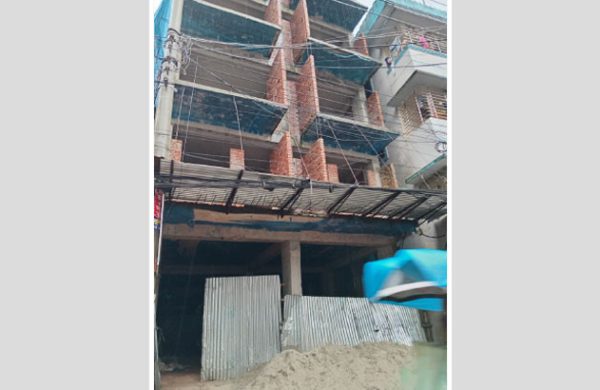Apparel manufacturers investing in new technology to boost export
- Update Time : Monday, November 14, 2022

2.20 lakh new jobs to be generated in around 230 apparel and textile units
Swarnomoyee Mostafa Oishy:
Country’s apparel and textile manufacturers desire to invest nearly $3.5 billion in new technologies within the next year with a view to increase export earnings.
Meanwhile, a target of $100 billion worth of exports from the garment sector has been set by 2030. To make this goal a reality, apparel manufacturers have started investing in different new technologies so that they can keep a greater contribution in the country’s economy, insiders said.
These new technologies include manmade fibers and robotics, along with state-of-the-art clothing manufacturing equipments. These advanced technologies will further diversify the export products of this sector as well as increase the overall production of the factories.
At the same time, this new investment is expected to generate at least 2.20 lakh new jobs in around 230 apparel and textile units.
According to sources, among the new factories, some 137 factories have become members of Bangladesh Garment Manufacturers and Exporters Association (BGMEA), 60 factories have become members of Bangladesh Knitwear Manufacturers and Exporters Association (BKMEA) and 27 factories have become members of Bangladesh Textile Mills Association (BTMA) this year.
There is no exact information about how many new investments have come in this sector. The cost of setting up a garment factory can be as high as Tk 100 crores. However, the minimum cost of setting up a 10-line factory in a rented building may be at least Tk 5 crore, industry insiders said.
As such, 197 new member factories of BGMEA and BKMEA have invested around Tk 6,000 crore or 600 million dollars, said senior officials of the two organizations.
Besides, about $3 billion has already been invested in setting up 15 new textile units and expanding 12 more. Most of this has been invested in manmade fiber production.
BTMA president Mohammad Ali Khokon that new textile manufacturers have already started opening LCs for importing capital machinery. The factories are expected to start operations by 2023.
“Each new garment factory will create between 300 and 1,000 new employment opportunities,” Mohammad Hatim, Executive President of BKMEA said.
Among the new members of BGMEA, five are foreign companies and three are joint ventures, said Shahidullah Azim, Vice President of the organization.
He added that BGMEA is looking at other markets besides the European Union and the United States.
Firms such as Tim Group, Urmi Group, Chittagong-based Pacific Jeans and RDM Group have focused on installing new technologies in factories to increase their production capacity and strengthen their position in the global readymade garment export market.
Qutubuddin Ahmed, Chairman of Envoy Textile Limited said that, “Shelltech Group, the parent company of the company, has started setting up a denim garment and knit composite factory. The two factories will start production by the end of 2023.”
“Our eco-friendly denim factory will produce high-quality apparel items. Besides, the knit composite factory will be set up in joint venture with a renowned foreign garment manufacturing company. Both units will use state-of-the-art technology to provide quality products to the customers,” he added.
Urmi Group, another leading garment manufacturer, has already invested Tk 120 crore in setting up a garment factory with new technologies.
Asif Ashraf, Managing Director of Urmi Group said, “Their new factory will have 40 production lines and create around 3,000 employment opportunities.”
Focus on increasing market share:
Chairman of Research and Policy Integration for Development (RAPID) Bangladesh and Research Director of Policy Research Institute of Bangladesh (PRI) Mohammad Abdur Razzak said, “Bangladesh’s role as a global leader in garment exports will be consolidated in the coming days.”
In terms of cotton garments, Bangladesh has a share of 16 percent in the global market. China is ahead of Bangladesh with 17 percent. According to experts, Bangladesh may overtake China soon. However, the country’s contribution to manmade fiber-based garments is less than 5 percent.
Dr. Razzak said, “Bangladesh will be able to earn $100 billion in export earnings from the garment sector, if it contributes 20 percent to cotton garments and 12 percent to manmade fiber.”
China’s global market share continues to decline. Therefore, he mentioned that there is a huge opportunity in front of Bangladesh for the rapid expansion of exports.
Shovan Islam, “Managing Director of Sparrow Group said, “We want to increase our share in the global market by producing high-value products including manmade fibers.”
Investment in new technology to increase production:
Garments, textiles and related products producers said that most of the large and medium-sized factories in this sector are now replacing manual machines with automatic machines.
Narayanganj-based Fatulla Apparels Limited has recently replaced manual thread cutters and installed automatic trimmers in the factory. The concerned people said that, this new machine ensures the highest quality of the product.
Besides, the overall system of the factory has been automated. This will facilitate monitoring and reporting, which will increase overall production of the factories.
LEED certified green factory has invested in new technologies to reduce production time and physical labor of workers, Fazlee Shamim Ehsan, CEO of Fatullah Apparels and Vice-President of BKMEA said.
Meanwhile, the Urmi Group has also introduced robotic systems, auto pressing and automatic finishing machines to transport goods to the factory.
“Ananta Apparels and Faukir Group have introduced hanger systems to speed up their assembly lines,” said Fazlee Shamim Ehsan.
Besides, apparel entrepreneurs have been showing interest in setting up their own design centers for the past decade. Newly designed products have the potential to increase their revenue by 5 to 10 percent.
The garment industry owners’ association does not have accurate information on how many factories in the country have world-class design studios. However, stakeholders said that, currently more than 100 local garment exporters have their own design and innovation centers, 25 of which are world-class.
The use of advanced machineries and robotic technologies is also gaining importance in recent years.
BGMEA Vice-President Shahidullah Azim said that, at least 30 garment factories have already started using such technology.
BGMEA President Farooq Hasan said that, they have invested in the Center of Innovation, Efficiency and OSH sector to develop the garment industry in the future. The center is slated to be launched in the Made in Bangladesh week. The center is to include facilities like innovation lab, distance learning system, displays, library, museum and day care center.
The center will also teach business fundamentals and digital marketing, along with technology development, the fourth industrial revolution, improved industrial relations and worker empowerment.
Dr. Mohammad Abdur Razzak, Research Director of Policy Research Institute of Bangladesh also added that, investment in the environment, society and administrative sectors is necessary to increase the productivity of workers and meet the challenges after being promoted from a low-developed country to a middle-income country.
















